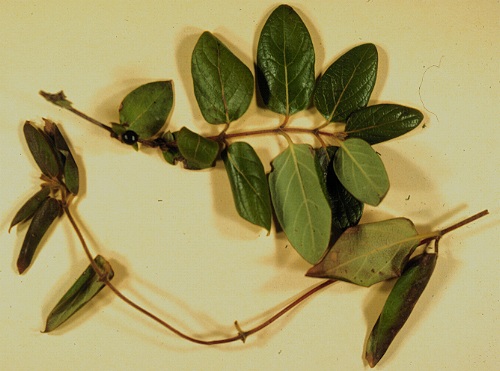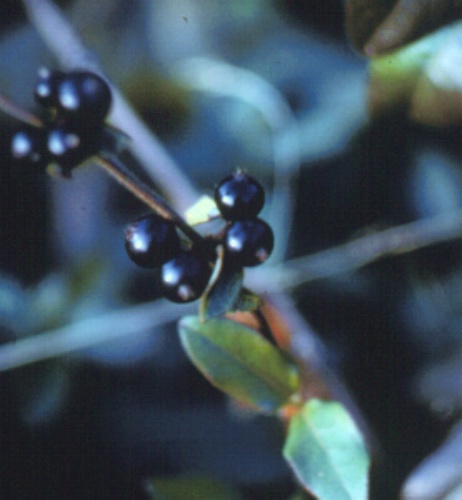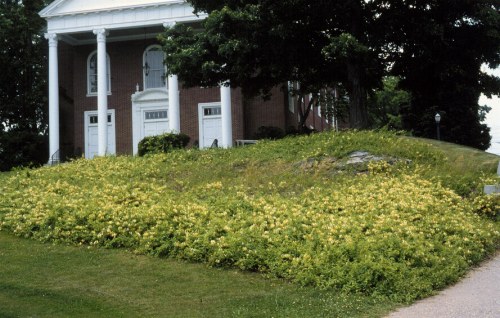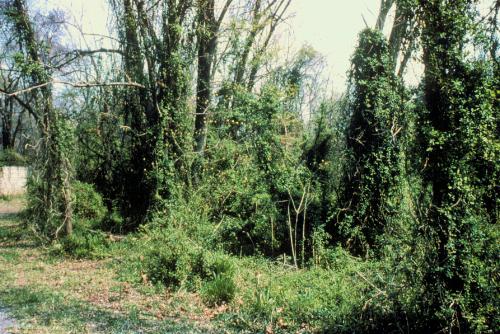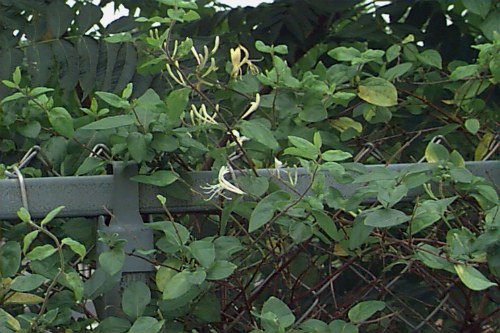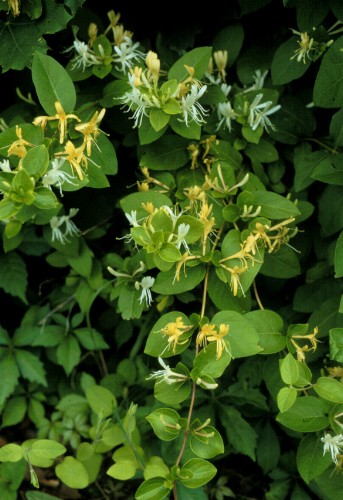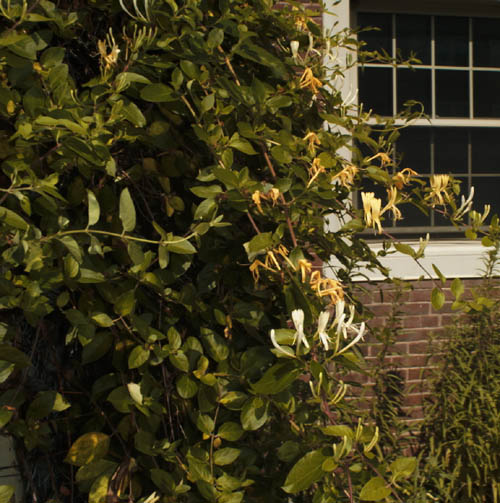Lonicera japonica
Japanese Honeysuckle
Caprifoliaceae
ExpandHabitat
- native to eastern Asia
- hardy to zone 5
- this species is widely naturalized in the United States
- Special Note: This species has demonstrated an invasive tendency in Connecticut, meaning it may escape from cultivation and naturalize in minimally managed areas. For more information, .
Habit and Form
- a twining, climbing vine or prostrate and trailing groundcover
- semievergreen
- tends to be a weedy and rampant grower
- can spread or climb 15' to 30' feet
- as groundcover, it usually doesn't get much over 2' tall
Summer Foliage
- opposite, simple leaves
- evergreen, semievergreen, or deciduous, depending on the climate
- leaf shape is ovate
- leaves are 1.25" to 3.25" long
- leaf color is a dark, lustrous green
- young leaves and stems are pubescent
Autumn Foliage
- leaves turn a bronze or purple
Flowers
- flowers are white and fade to yellow
- bloom time is mid-June
- flowers are fragrant
- relatively showy in full bloom
Fruit
- small, black fruit
- not really of any ornamental significance
Bark
- stems are slender, so bark is not ornamentally important
Culture
- easy to grow
- full sun to partial shade
- tolerant of difficult growing sites
- adaptable to most soils
Landscape Use
- barrier
- erosion control
- screen
- groundcover
- useful on banks
- difficult sites
- for fragrance of flowers
Liabilities
- a rampant and weedy grower needing to be contained in some circumstances
- not evergreen in zones 6 or colder
ID Features
- a twining vine or groundcover
- stems pubescent
- evergreen or semievergreen tendencies
- flowers white, fading to yellow
- flowers fragrant
Propagation
- by cuttings
Cultivars/Varieties
'Aureoreticulata' - This is a novelty form with a yellow netted pattern on its leaves that is most pronounced in full sun. It is less vigorous than the species. Overall, it appears diseased or sick. 'Tricolor' is another variegated form with multi-colored foliage mottled pink, white, cream, green, etc.
'Halliana' (known commonly as "Hall's Honeysuckle") - Similar overall to the species, this selection has flowers that rapidly change to yellow after opening and are quite fragrant. Similar is 'Halliana Prolific' (also known as 'Hall's Prolific') which supposedly grows even more vigorously to 20' and has profuse flower set.
'Purpurea' - Very commonly offered, this plant offers purple-tinted deep green foliage. The flowers are reddish on the outside.
